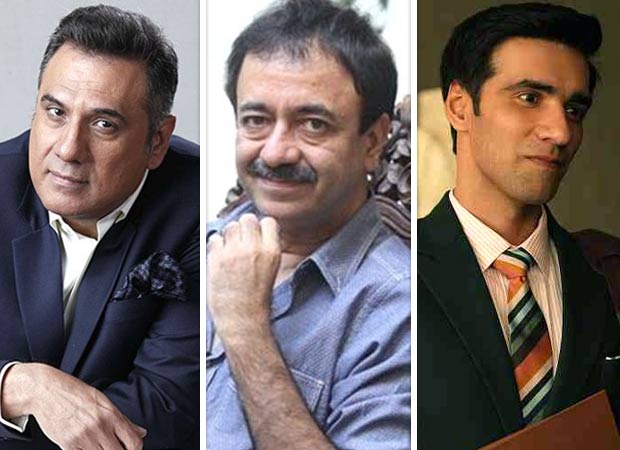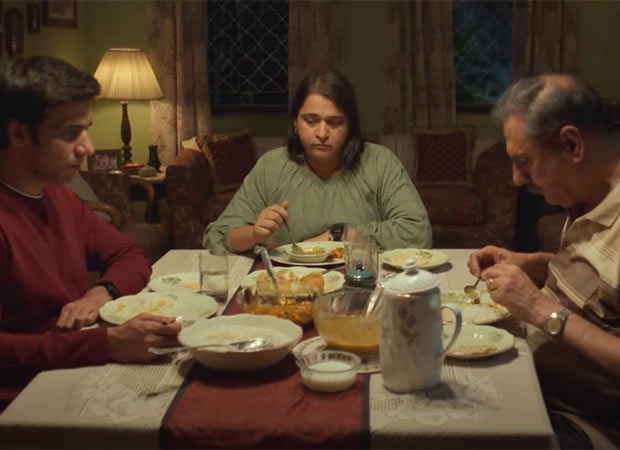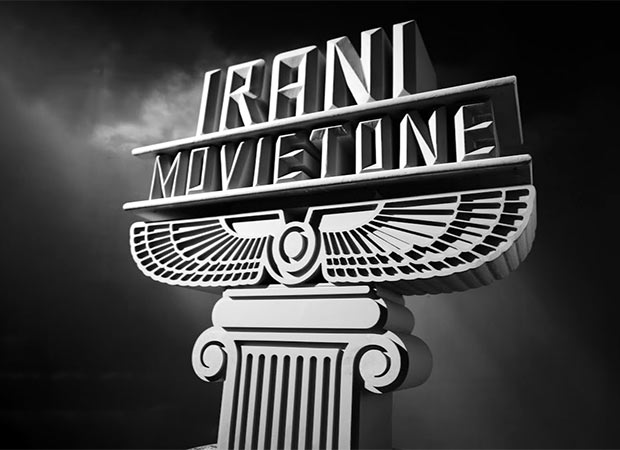Boman Irani is a happy man. His directorial debut The Mehta Boys has been unanimously loved. In an exclusive interview with Bollywood Hungama, Boman happily and passionately answered questions about diverse aspects of the film and a lot more.

EXCLUSIVE: Boman Irani reveals, “Rajkumar Hirani saw The Mehta Boys THRICE”; explains why the sister’s character disappears in the second half and why he had to FIGHT to construct the meeting room set
Now that The Mehta Boys is out for the whole world to see, has the response been different from that one that you experienced in the film festivals?
When we were showing it across the world at film festivals in Toronto, Chicago, Germany, Florence, etc, we saw all kinds of audiences and it calmed my nerves seeing their reaction. I used to wonder, ‘How will audiences react to a film which looks indie, which feels like a chamber piece, and which is not going to get hoardings all over the city’. My myth was broken while seeing the reaction at the festivals. Everyone reacted as if it was a film made for them, be it foreigners, expatriates or members of the Indian diaspora. They reacted on a level of humaneness. It was like a mirror to them.
Then, we had a screening here at Regal Cinema, Mumbai. We were lucky as it’s an iconic cinema where I have grown up watching films. The balcony was filled with my family, friends and crew. Downstairs were all walk-ins; they were the ones attending the Kala Ghoda Art Festival. I had no idea what this audience was going to be like! They could have entered expecting a nice comedy; who knows? But they were reacting to every single nuance. They cheered and even clapped in some scenes. That calmed me down completely! I was always proud of the film; I just did not know its reach. That Regal screening made me realize that this film can be for everybody.
There’s a shot where Shiv (Boman Irani) and Amay (Avinash Tiwary) are lying on the bed. The roof is broken, and the camera zooms out of their house and pans to the city. This and many other scenes make you realize that the VFX is top-class. How did you manage to achieve that, especially when the costs were probably controlled for a film like this?
I used to tell them ‘Mujhe aisa shot chahiye, mujhe karke dikhao’ (laughs)! On a serious note, the VFX guys were too sweet. They looked at the film in a very emotional way. It moved me. As for that particular shot, it is shot on a real terrace. We pulled out and there was a mark of a blue bob on the roof. That’s it!
I agree but my point is that it looks great. Such VFX is often not seen in our other Hindi films…
I don’t know about it. I just told them what I wanted, and this is what it should look like as it was a very important moment in the film – the father and son are sleeping on the bed but they are still not friends. Meanwhile, the mother is watching them thinking, ‘Buddhu log, kuch karo life mein’!
Also, why are we looking at buildings in the film? It’s not a stock city shot. In the first scene of Sen (Siddhartha Basu), where he talks about the project, we have taken a shot from such an angle that you can see that we are referring to the old and new structures, the latter being of glass and steel. The office was a set that we built. My son, who’s a producer, as well as executive producer Ankita Batra kept asking me, ‘Do we really have to build an office set?’! I reasoned that I needed to show those buildings at a particular distance to contrast the old-world wooden and art deco-style office against the glass and steel structures. You are talking about budgets; of course, there would be fights with the producer. Luckily, it was my son who was the producer! He and Ankita were in one team, and I was in another. I made it clear that I wanted it. I was like, ‘You can cut the budget from somewhere else, mujhe khana mat khilao!’ But I needed that shot; it was important as it was going to show two contrasting worlds.

That whole angle comes up unexpectedly in the film…
(Smiles) It blindsided you, didn’t it? You wonder, ‘Why are they sitting in the balcony, why are they staring at the buildings, why is the old man saying that India ab India hi nahin lagta’. But it draws attention to glass and steel and later, the son realizes that he should have listened to the old man about the value systems. Our grandparents go on and on telling us about it and we don’t seem to listen thinking, ‘Yeh pakav cheezein kaun sunega’. But that’s what we are missing out on – the old-world value systems.
Shiv and Amay come face-to-face for the first time in the film when the mother dies. The way Shiv greets Amay made me feel for a moment that he has lost his memory or his marbles! What was the idea behind that scene?
That’s the first sign of awkwardness that the audience witnesses. So, what is he supposed to do? The wife has died, and the son has returned. We were not okay with the idea of father crying and saying, ‘Beta, tu aa gaya’! That’s also the first scene Alex (Alexander Dinelaris) and I wrote actually. The old man just didn’t know how to deal with it; their awkwardness was so stupid! The son is dying to hug him, but the father extends his hand.
The character of the sister Anu (Puja Sarup) is memorable but after a point, she disappears. A lot of people have written about it…
It was not her story. She must have called but it’s not in the film. The old man must have told her, ‘I am in Navsari, I am by myself and playing cricket. I am fine’. Why do we need to see her? She’s out of their lives. America mein hai; roz phone nahin karti hai woh! People are asking ‘What happened to her?’. I don’t need to know what happened to her. She must have called and said, ‘You guys are now on your own’. I didn’t need to show that. Had I shown that, it would have come in the way of the narrative. We had to tumble the narrative along. It was a conscious decision. The same happens with Zara (Shreya Chaudhry). It’s up to these old fools to figure out their lives. For how long are the women going to play referees for these two idiots? Hence, the idea was that these two male egoistic men have to sort it out themselves.

You have a great association with Rajkumar Hirani and even his films depict a strong father-son bond. Did that subconsciously influence you?
I am not sure. I take influences from everywhere. Raju has been a great influence in my life and so are Ram Madhavani, Subhash Kapoor, Farhan Akhtar, Shyam Benegal, etc. With The Mehta Boys, I wanted to have a voice of my own. I had to ensure that I didn’t have to let influences creep into my work.
Has Rajkumar Hirani seen The Mehta Boys?
He saw it thrice! He loved it. We didn’t get into the technicalities of the film. These films are about humans and how much they move you. He spoke to me on a human level. I did ask him about the technical side, ‘Did you pick up that little bit’. He replied, ‘I didn’t see it and I don’t care’! If the film does not relate to you on a human level, then you start looking at all the cinematic flaws. And I am happy if you have just noticed the humanity of it.
Will there be a sequel to The Mehta Boys?
I don’t think so. Ever since I wrote the first draft, I always used the airport as ‘God’s waiting room’. His flight to the USA is the final flight of his life, his departure so to speak. We get a hint of it when the sister says, ‘Ja ke mil le. You might never see him again’. That time, he was angry as he was ‘insulted’ the night before. But still, he makes the effort. The story simply says – don’t live with regrets.
Lastly, the name of your banner stands out – Irani Movietone. It reminds of Ranjit Movietone and many such yesteryear film companies…
(Smiles) I grew up watching films at the Alexandra Cinema at Mumbai Central. This theatre was owned by Ardreshir Irani, who made India’s first talkie, Alam Ara (1931). His film company’s name was Imperial Movietone. Sohrab Modi made all his great films like Pukar (1939), Sikandar (1941), etc. under the banner of Minerva Movietone. And in Dadar, you have the Ranjit Movietone. These are all Parsi companies. There was also Nadia Movietone that made films of Fearless Nadia. I just like that term. Instead of saying ‘So-and-so films’, I preferred to call it ‘Irani Movietone’ (smiles).
It also has a black-and-white logo which gives it a retro look…
We made the logo on a wooden cutout and placed it on a turntable. There’s also non-CGI smoke. We tried to make it as old-world as possible (smiles).
Also Read: Boman Irani on the subject of The Mehta Boys, “A lot of it can come from a personal space but…”
BOLLYWOOD NEWS – LIVE UPDATES
Catch us for latest Bollywood News, New Bollywood Movies update, Box office collection, New Movies Release , Bollywood News Hindi, Entertainment News, Bollywood Live News Today & Upcoming Movies 2025 and stay updated with latest hindi movies only on Bollywood Hungama.

